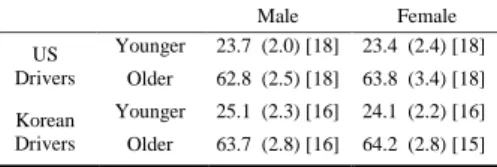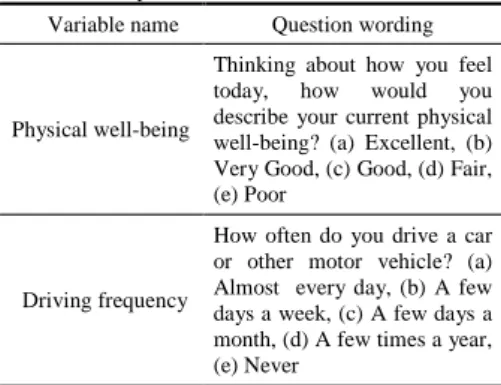Age and cross-cultural comparison of drivers' cognitive workload and performance in simulated urban driving
Texte intégral
Figure




Documents relatifs
The abundance and distribution of these species were dependent on their biological traits (seed longevity in the soil bank) as well as the tree base characteristics (tree
• In the Tracking step, information about the vehicle dynamics are considered (velocity and steering angle) to improve the tracking of the object in the local Cartesian
As previous findings using cognitive tests different from driving tasks have shown longer reaction time in case of conflict situations (Giora et al., 2017; Perrier et al., 2015)
Effect of Cognitive Demand on Functional Visual Field Performance in Senior Drivers with Glaucoma. Viswa Gangeddula, MS 1 , Maud Ranchet, PhD 2 , Abiodun E Akinwuntan, PhD, MPH, MBA 1
Even though cognitive training focused on speed of processing and visual attention improves these cog- nitive abilities relevant to driving safety [ 42 , 43 , 45 , 48 ], con-
The presence of C21 sensitivity (a marker for R 1 rough mutants) among the wild-type isolates ofMAb- defined R 1 rather than R2 or R3 core type supports our view that the
Using notified case data of both the number of suspected Zika infections and confirmed microcephaly cases, we demonstrate how the combination of high suitability for viral
Recently, the Joint United Nations Programme on HIV/AIDS (UNAIDS) proposed ambitious treatment targets for 2020, suggesting that 90% of all HIV-infected people should be diagnosed